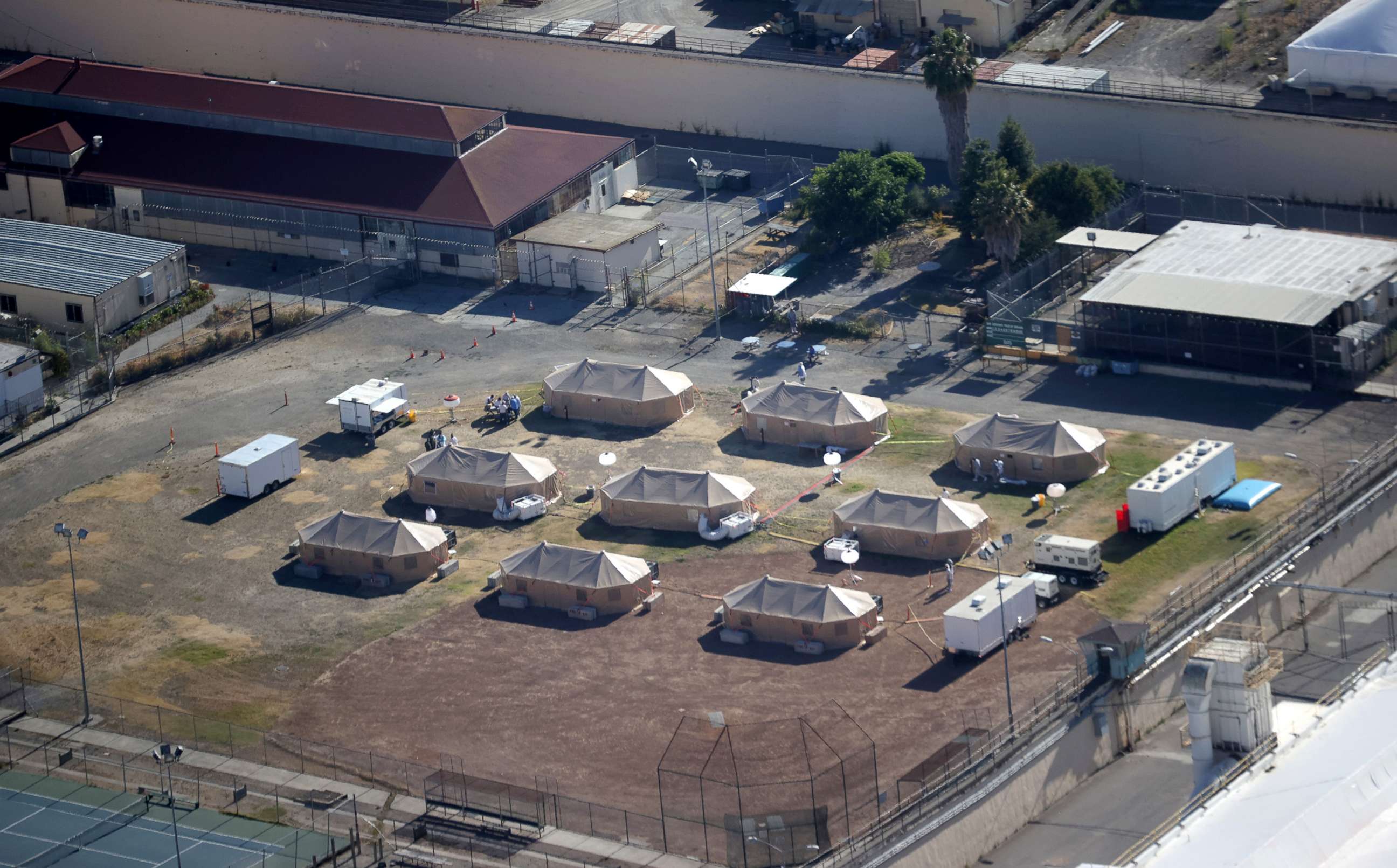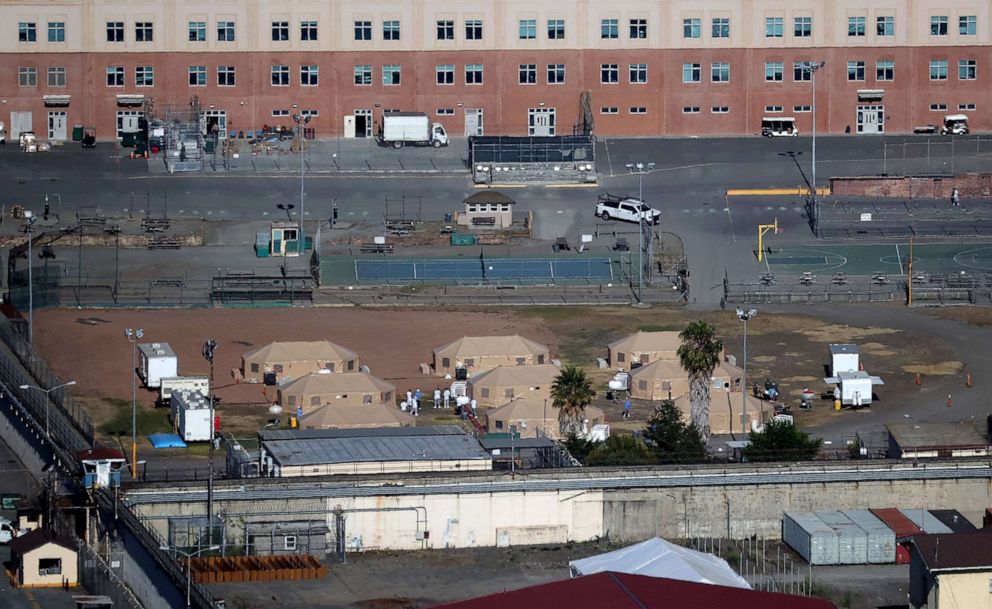California's San Quentin prison using tents, warehouse to treat inmates infected with COVID-19
San Quentin State Prison in California has erected tents and is converting a warehouse to treat a coronavirus outbreak that's infected more than 1,800 inmates and staff.
Aerial footage shows nine tents on the institution's baseball field, part of the prison's efforts to treat inmates with COVID-19 right on the grounds while opening up space for social distancing, quarantine and isolation in the crowded facility.
The tents are currently operational, a spokesperson for the California Department of Corrections & Rehabilitation (CDCR) confirmed to ABC News. Each tent can house 10 patients. The spokesperson did not know how many patients were currently being treated in the tents.
The prison is also converting a warehouse into a 220-bed care site to treat COVID-19 patients at the institution. The California Prison Industry Authority furniture facility is currently being deep-cleaned and sanitized, with plans to begin housing patients by early next week, the spokesperson said.

More than 40 nursing staff from California Correctional Health Care Services have been redirected from other institutions and headquarters to assist in health care operations at San Quentin, CDCR has said.
San Quentin has the largest outbreak among California's 35 CDCR adult detention facilities, and is the site of the third-largest cluster of COVID-19 cases in the U.S., behind two correctional institutions in Ohio, according to the New York Times.
San Quentin didn't have any confirmed cases of COVID-19 until after CDCR transferred 121 inmates there on May 30 from a Chino prison that was experiencing an outbreak. San Quentin's first active case was May 31, CDCR data shows.
As of Thursday, the prison has had 1,642 confirmed cases among inmates and at least 200 among staff, according to figures from CDCR. Seven inmates have died.

Health experts at UC Berkeley and UC San Francisco recommended in mid-June that the population at San Quentin be reduced to at least half its capacity to prevent a "full-blown local epidemic and health care crisis" in the prison and nearby communities.
As the outbreak has grown, a coalition of prison advocates, California state legislators and members of the incarcerated community has been calling on Gov. Gavin Newsom to reduce the prison population at San Quentin to below 50%, as well as stop transfers between prisons and ICE detention centers.
"People in there feel abandoned, left alone, like no one cares if they die," James King, state campaigner for the Ella Baker Center for Human Rights, said Thursday at a press conference organized by the Stop San Quentin Outbreak coalition.
A mother who said her son has tested positive for COVID-19 while incarcerated at San Quentin pleaded for his safety.
"My son's life is important," Shawanda Scott said. "Bring him home."
At his daily coronavirus briefing on Thursday, Newsom said the situation at San Quentin is "the biggest concern," with population reduction a focal point.
In recent weeks, the state has been working to reduce the inmate population through expedited and natural releases, as well as the suspension of intake from county jails. In March, the prison was at 131% capacity, with a population of 4,051, Newsom said. In a few weeks, the plan is to have that number down to 3,076, "below 100% capacity," he said. As of Wednesday the population was 3,392, according to CDCR.
The state is also working to expedite COVID-19 test results, the governor said.
"All of us are now accountable to addressing this issue," Newsom said. "That's precisely what we're doing."
ABC News' Abigail Shalawylo contributed to this report.




